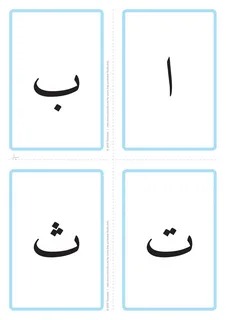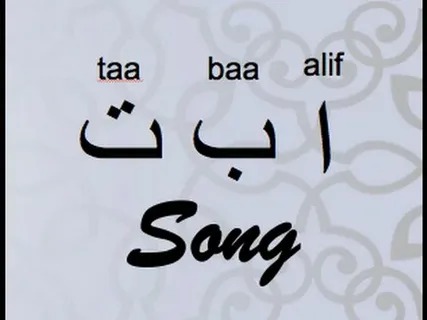The Arabic language is a fascinating and rich linguistic treasure, with a script that has captured the imagination of many. One of the fundamental aspects of this language is alif ba ta Arabic alphabet, known as “Alif Ba Ta” in Arabic script. In this article on Arabian Tongue website, we will embark on a journey to explore the intricacies of the Alif Ba Ta Arabic alphabet, its history, significance, and its role in the modern world.
The Origins of Alif Ba Ta

Ancient Beginnings, The roots of the Alif Ba Ta Arabic alphabet date back to ancient Arabia. It is believed to have evolved from the Nabataean script, which was used by the Nabataean civilization in the Arabian Peninsula around the 4th century BCE. Over time, this script underwent significant modifications and became what we now know as the Arabic alphabet.
The Influence of Aramaic
One of the notable features of the Arabic script is its strong influence from the Aramaic alphabet. This influence can be observed in the shapes and forms of several Arabic letters, showcasing the interconnectedness of various ancient civilizations.
The Structure of Alif Ba Ta
Consonants and Vowels, The Arabic alphabet consists of 28 letters, including both consonants and vowels. Unlike the Latin alphabet, which predominantly uses consonants, Arabic script incorporates vowels as an integral part of its writing system. This enables the language to be accurately pronounced and written.
Unique Characteristics
Each letter in the Arabic alphabet has its own unique shape and can take different forms depending on its position within a word. This complexity adds to the beauty and artistic nature of Arabic calligraphy.
The Importance of Alif Ba Ta
Understanding the Arabic alphabet is not only essential for language learners but also crucial for appreciating Arabic literature, calligraphy, and culture. It opens doors to a world of knowledge and creativity.
Learning the Alif Ba Ta
A Learning Journey, For those interested in learning Arabic, mastering the Alif Ba Ta is the first step. This alphabet serves as the foundation upon which all other aspects of the language are built. Many educational resources, both online and offline, are available to assist learners in acquiring this essential skill.
A Global Language
Arabic is spoken by millions of people worldwide, making it one of the most widely used languages globally. Knowledge of the Arabic alphabet is invaluable for anyone seeking to communicate, travel, or do business in Arabic-speaking regions.
Digital Age Adaptation
In the age of technology, the Arabic alphabet has seamlessly integrated into digital platforms, making it accessible to a global audience. Arabic fonts and keyboard layouts are readily available on computers and smartphones, facilitating communication in the digital realm.
Steps for Mastering the Basics of Arabic Alphabet (Alif Ba Ta)

Arabic script, known for its elegant and flowing characters, has a rich history and a unique visual appeal. Each letter in the Arabic alphabet tells a story, and mastering them opens the door to understanding one of the world’s most significant languages:
1. Understanding the Arabic Alphabet
- Alif (أ): The first step in mastering Arabic is to acquaint yourself with Alif, the first letter. Alif is a simple vertical stroke, and it often serves as a glottal stop. It’s a foundational letter, and from it, you can begin to explore the intricacies of Arabic writing and reading arabic.
- Ba (ب): Ba, the second letter, represents the ‘b’ sound. Learning to write and pronounce Ba correctly is crucial as it frequently appears in basic Arabic words.
- Ta (ت): Ta represents the ‘t’ sound and is the third letter of the Arabic alphabet. It’s a bit more complex than Alif and Ba but is essential for building vocabular.
2. Getting the Right Resources
- Arabic Alphabet Charts and Diagrams: Start your Arabic learning journey with reliable resources. Arabic alphabet charts and diagrams can help you visualize and memorize the letters effectively.
- Online Courses and Tutorials: Consider enrolling in online courses or tutorials specifically designed for beginners. These resources offer structured lessons and interactive exercises.
3. Practical Tips for Learning
- Consistent Practice: Consistency is key when learning a new language. Dedicate time each day to practice writing and pronunciation.
- Flashcards and Repetition: Create flashcards with Arabic letters and their English equivalents. Regular repetition will reinforce your memory.
- Join Language Communities: Join online Arabic language communities or forums. Engaging with native speakers can enhance your learning experience.
4. Mastering Arabic Pronunciation
- Unique Arabic Sounds: Arabic has sounds that don’t exist in English. Focus on mastering these unique phonetics to improve your pronunciation.
- Listening and Imitating: Listen to native speakers and try to mimic their pronunciation. This method can help you develop an authentic accent.
5. Basic Arabic Writing Skills
- Connecting Letters: Learn how to connect Arabic letters to form words and sentences. Arabic script has a distinctive cursive style.
- Forming Words: Practice writing simple Arabic words to gain confidence in your handwriting.
6. Building Vocabulary
- Common Arabic Words: Start with common Arabic words used in everyday conversations. This will make your language acquisition more practical.
- Daily Vocabulary Lists: Create daily vocabulary lists and use them to expand your knowledge of Arabic words.
7. Grammar Basics
- Sentence Structure: Understand Arabic sentence structure, which differs from English. Arabic sentences often start with verbs.
- Verb Conjugation: Learn the basics of verb conjugation, as verbs are central to Arabic grammar.
8. Reading Arabic Texts
- Practice with Simple Texts: Start reading simple Arabic texts and gradually progress to more complex material as you become more confident.
- Gradually Increase Complexity: Challenge yourself with Arabic books, newspapers, and online articles to improve your reading skills.
FAQs
Is the Arabic alphabet difficult to learn?
Learning any new alphabet can be challenging, but with dedication and practice, mastering the Arabic alphabet, including Alif Ba Ta, is achievable.
How many letters are there in the Arabic alphabet?
The Arabic alphabet comprises 28 letters, each with its own distinct shape and sound.
Can I learn Arabic calligraphy?
Yes, Arabic calligraphy is a beautiful art form that anyone can learn with the right guidance and practice.
Are there any online resources for learning Arabic?
Yes, there are numerous online courses, apps, and websites that offer Arabic language lessons and resources.
What is the significance of Arabic in the modern world?
Arabic is not only a language but also a key to understanding the culture, history, and business opportunities in the Arab-speaking world.
Conclusion
The Alif Ba Ta Arabic alphabet is not just a set of characters; it is a gateway to a world of culture, history, and communication. Learning and appreciating this script can be a rewarding journey for language enthusiasts, travelers, and anyone curious about the richness of the Arabic language.


